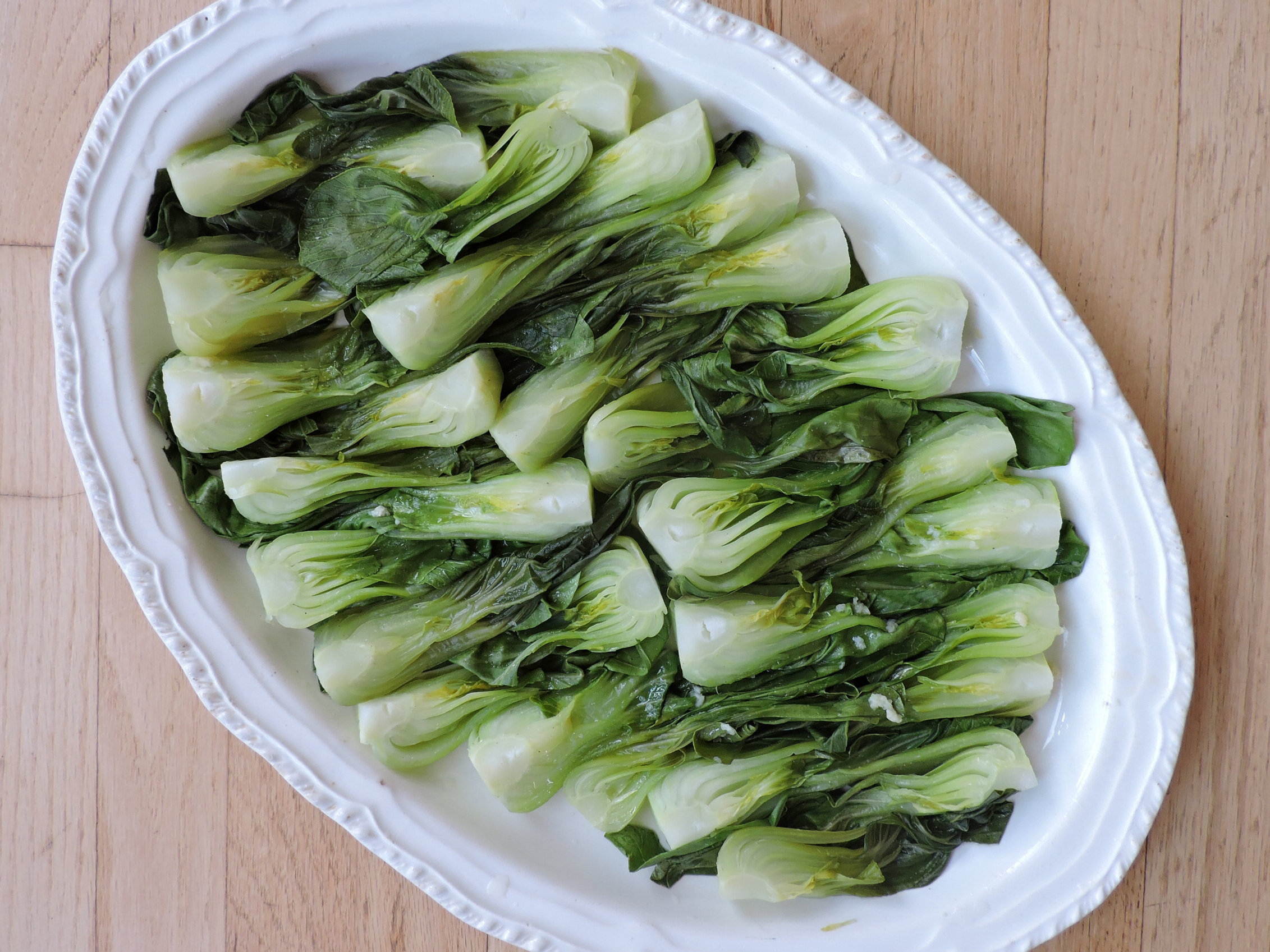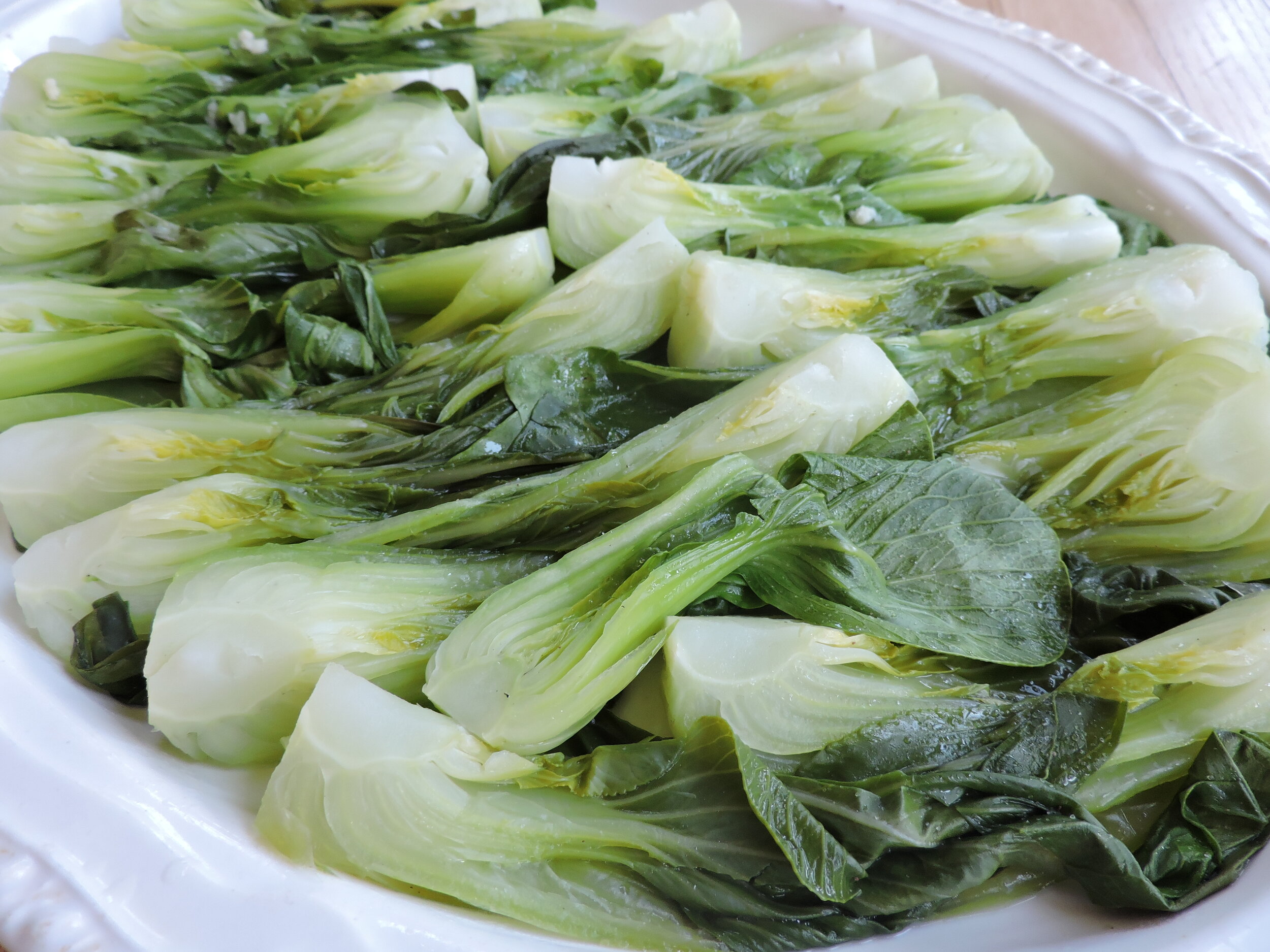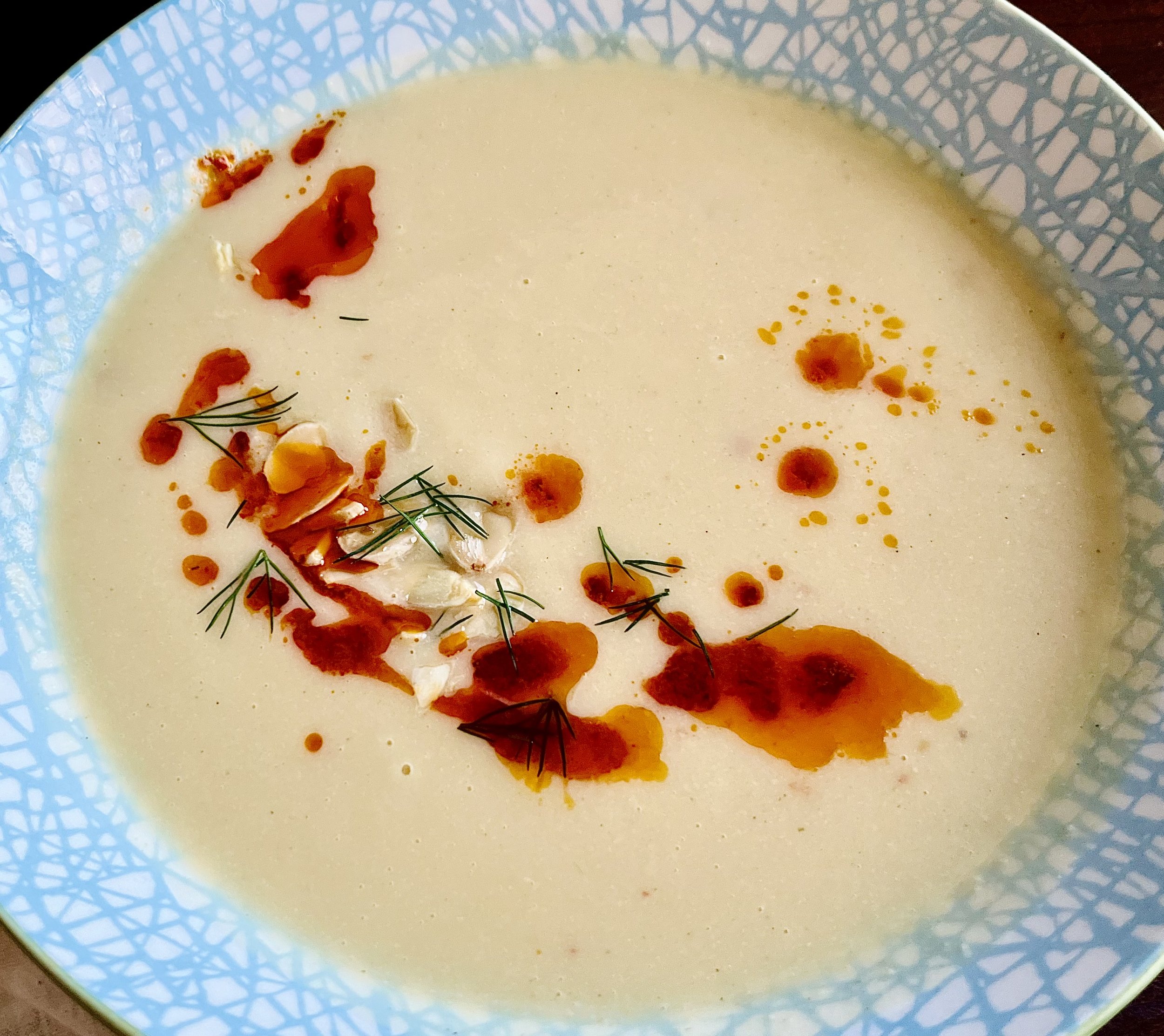Bok Choy with Garlic and Bay Leaf
Have you had bok choy? I never did until we started growing vegetables for a living. It is well received at market, so it has become a spring staple. It is a Chinese cabbage that is delightfully crunchy, crisp at the bottom (sort of like celery) with dark, tasty leaves on top. It has the slightest hint of the spice you get from a turnip, a touch of bitter earthiness like kale, and the tender smoothness you get from spinach. It is also tastiest on the smaller side. Then it is much more tender and can be eaten raw, sliced into a salad or on its own. As it gets bigger and more mature, the bottom becomes much tougher and the flavor less delicate.
Bok choy initially stumped me in how to cook it. My go to for most vegetables is to chop them up, generously coat with olive oil, season well with salt and pepper, and roast in a hot oven. This method is nearly always a guaranteed hit. With bok choy, however, the result was not so satisfactory. The bases seemed to take forever and ever to get tender and the tops got dried out and bland. Frankly, after a few failed attempts, I avoided cooking bok choy for nearly a year.
But this year, my husband is not only growing his most beautiful bok choy yet, but also a recipe in a cookbook I checked out from the library provided an eureka moment. Rather than roasting, bok choy does much better with steaming and sauteeing. Now I wonder why I didn’t think of that sooner! It makes sense for an Asian vegetable, and, yes, would taste delicious in a stir fry.
Below I give more of a method than a hard and fast recipe for cooking bok choy. Feel free to embellish and improve! It is very flexible, too, in amounts. It is also delicious the next day cold from the fridge if, like me, you love a refreshing burst of chilled, water crisp veggies!
bok choy with garlic and bay leaf
The garlic and bay leaf add just the right amount of aromatics to flavor the water and bring more depth to the bok choy. Beyond that, just make sure to salt generously!
Ingredients:
Bok Choy (about 1-2 per person is a good amount)
Garlic cloves (about 1 per 4-6 bok choy)
Bay leaves (1-3 per 4-6 bok choy)
Salt
Water
Butter, optional
Directions:
Trim the bottoms of the bok choy and slice into halves. If some are larger, slice them into quarters. Have all your bok choy be roughly the same thickness at the base, however. This part takes the longest to cook and you want them to cook evenly.
Gently clean your bok choy, getting any dirt out from in between the leaves, but being careful not to break off more leaves.
Find a large skillet pan that will fit your bok choy. You can nestle and pack the bok choy in, but will need to be able to put a lid on top.
Start to nestle your bok choy into the pan. One layer will cook faster and most evenly, but you can do more if there is not a large enough pan to accommodate. Sprinkle the bok choy generously with salt. (If you do need more than one layer in the skillet for them all to fit, make sure to sprinkle the first layer generously with salt. Then continue nestling in the bok choy and sprinkling with salt with each layer to make sure they will all be seasoned well.)
Once all the bok choy are in the pan, mince the garlic and add it to the top. Then add the bay leaves (keeping track of how many you add so you can remove them before serving — you don’t want them to get lost and mistaken for a bok choy leaf!).
Drizzle a few tablespoons and up to 1/2 cup of water (for larger, layered amounts) over the bok choy. You want enough water to keep the leaves from getting scorched, but not so much to submerge them all. (At this point, if you want to cook the bok choy later, they will wait happily for at least an hour or so at room temperature, or you could place in the fridge for an even longer period.)
Cover the bok choy and bring to a boil. Lower to medium high heat and continue to cook for about 3 minutes or so until the bok choy are a brilliant green and the bases are tender.
Use tongs or a slotted spoon to transfer to a serving dish. Give them another sprinkle of salt and add a few small pats of butter for extra yum. Enjoy!
















